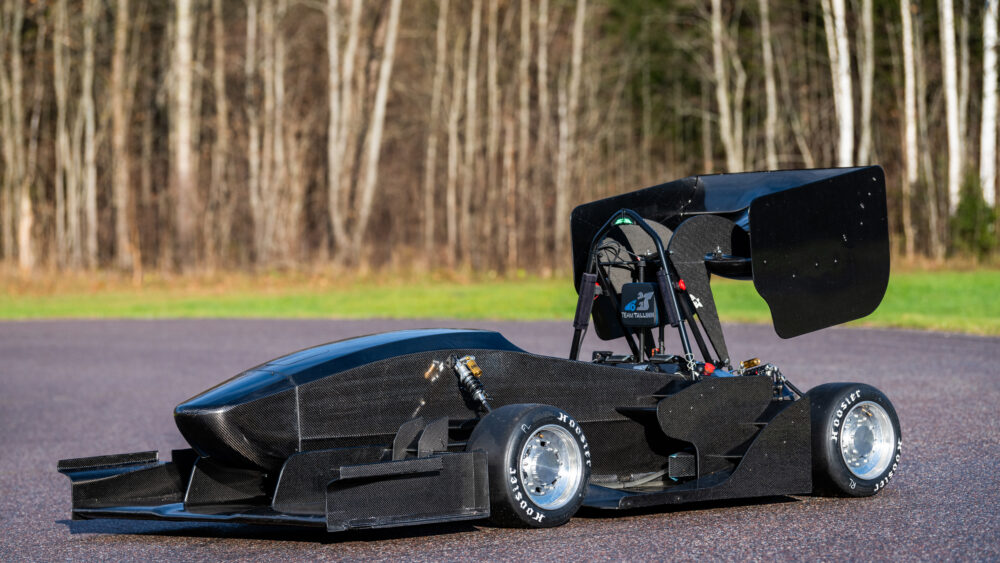Formula Student Team Tallinn takes part in the product development competition series Formula Student and continues building an electric formula car and a driverless vehicle this year. The goal of this season is to compete in four competitions.
In the previous season, the team finished both cars – the electric formula car FEST20 and the driverless car FEST18-DV whereas some of the rival teams did not manage to finish their vehicles at all. Although the previous season was tough and there were no official competitions, the team was able to organise two alternative team events – a testing camp in Pannjärve and a closed competition for formula cars from FS Team Tallinn’s history.
The forthcoming season for the team is as uncertain as every other field these days. The Formula Student event calendar is promising at least four or five competitions while European competitions have set a goal that every team could physically take part in at least one of the competitions. This summer, Formula Student Team Tallinn hopes to be competing in Austria, Spain, the Czech Repuplic and Hungary. The team is grateful to all sponsors for supporting them through the toughest of times.
In the autumn, 60 students started their journey in FS Team Tallinn. The electric formula car is being built by 46 students and the driverless car by 14 students. The team consists of members from two schools: 23 students from Tallinn University of Applied Sciences and 37 from TalTech. Most of the members are studying in engineering fields such as Product Development and Robotics, Electrical Power Engineering and Mechatronics in TalTech and Automotive Engineering in TTK UAS, but there are also students from TalTech Business or Business Information Technology. Among 60 team members, 6 are ladies.
For the active members, building a formula student car is like a hobby – it takes up all their free time and sometimes even some sleeping hours. Every season starts with a designing period where the days are spent behind the computer designing new details. In the winter, the team moves on to production where members laminate the monocoque and aerodynamic elements, manufacture suspension components and solder the PCBs. Final assembly and testing of the vehicles are carried out in the spring.
The biggest changes for FEST20 were done in the suspension field. At the beginning of the season, the team supplemented their knowledge in vehicle dynamics, which led to a completely new suspension kinematics. In addition, a brand new corner assembly with a self-designed and self-manufactured planetary gearbox was made. The cooling system is manufactured using innovative aluminium 3D-printing, which enables endless possibilities to create an effective cooling geometry.
The team started developing a driverless vehicle in 2018 and currently, the third version is being built, which is based on the 2018 electrical formula car. Since there is no driver, the car perceives the surrounding world with a 64-beam LiDAR and two cameras that are function in mono- and stereo configuration. The formula car gets its driverless capabilities thanks to the Nvidia Xavier computer, which is meant for artificial intelligence and capacious neural network usage. Cameras are capturing 30 frames per second and the time to determine the object on the picture is 150ms.
Cones marking the track limits are detected from camera images using the YOLOv4 algorithm, after which the 3D location is estimated using a Perspective-n-Point algorithm on the cones detected in the picture. From the LiDAR point cloud 3D clusters of the cones are extracted and analyzed by a FNN type neural network that estimates the color of the cone using laser intensity values. The trajectory planner generates 1000 potential trajectories and evaluates them to determine the optimal path.
Mar
22


Comments are closed.